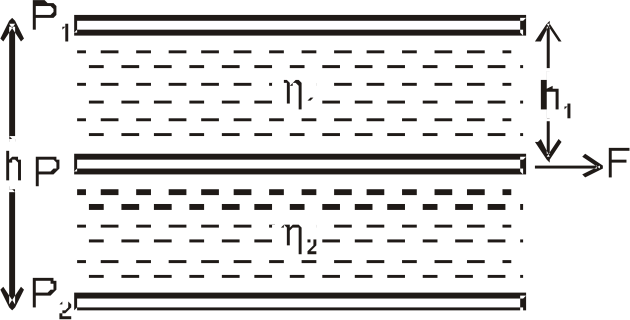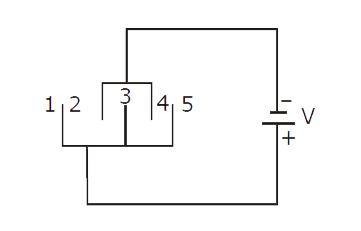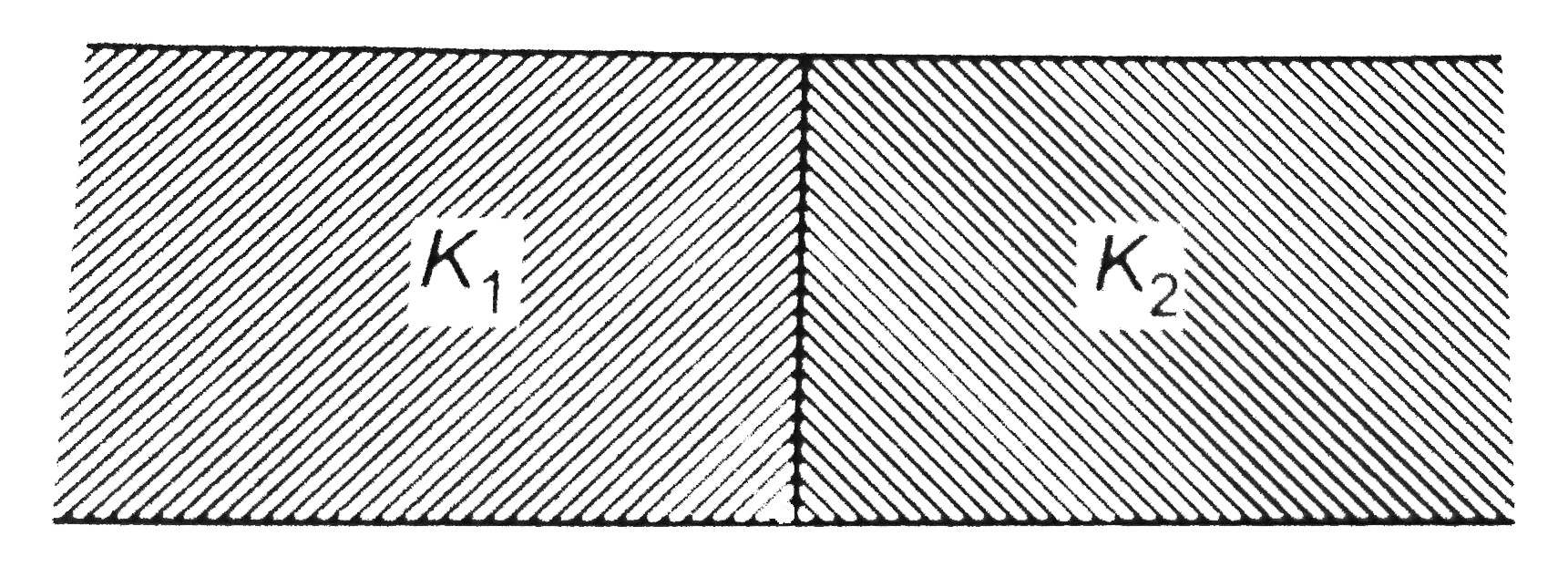A thin horizontal movable plate P is separated from two fixed horizontal plates P1 and P2 by two highly viscous liquids of coefficient of viscosity η1 and η2 as shown, where η2=4η1. Area of contact of movable plate with each fluid is same. If the distance between two fixed plates is h, then the distance h1 of movable plate from upper fixed plate such that the movable plate can be moved with a constant velocity by applying a minimum constant horizontal force F on movable plate is (assume velocity gradient to be uniform in each liquid).

h/4
h/2
2h/3
h/3
Let v be the velocity of the movable plate and F is equal to viscous force
F=[η1vh1+η2vh−h1]A⇒dFdh1=0∴h1=h3
Topper's Solved these Questions
Similar Questions
How will the voltage (V) between the two plates of a parallel plate capacitor depend on the distance (d) between the plates, if the charge on the capacitor remains the same?
View SolutionFind the charge on each plate given area of each plate is A and separation between two consecutive plates is d.
 View Solution
View Solution
Knowledge Check
- Question 1 - Select One
If there is a thin layer of water between two parallel plates then it is easier to seperate the plates by-
Adisplacing themBapplying force perpendicular to the surface of the platesCapplying force in the some directioDnone of the above - Question 2 - Select One
The p.d between two plates separated by a distance of 1mmis100V.The force on an electron placed in between the plates is
A105NB1.6×10−24NC1.6×10−14ND1.6×10−19N - Question 3 - Select One
Five identical plates each of area A are joined as shown in the figure. The distance between the plates is d. The plates are connected to a p.d. of V volts . The charges on plates 1 and 4 will be
 A∈0AVd,2∈0AVdB−∈0AVd,2∈0AVdC∈0AVd,−2∈0AVdD−∈0AVd,−2∈0AVd
A∈0AVd,2∈0AVdB−∈0AVd,2∈0AVdC∈0AVd,−2∈0AVdD−∈0AVd,−2∈0AVd
Two liquids of densities rhp1andρ2 coefficient of viscosity η1andη2 are found to flow through a capillary tube at the same rate. What is the ration of η1/η2?
View SolutionFive identical plates each of area a are joined as shown in the figure. The distance between the plates is d. the plates are connected to a potential difference of V volt. The charge on plates 1 and 4 will be
 View Solution
View SolutionTwo metal plates form a parallel plate condenser. The distance between the plates in d. Now a metal plate of thickness d/2 and of same area is inserted completely between the plates, the capacitance
View SolutionIn the Millikan's experiment, the distance between two horizontal plates is 2.5 cm and the potential difference applied is 250 V .The electric field between the plates will be
View SolutionTwo material having the dielectric constans K1 and K2 are filled between two parallel plates of a capacitor.
where area of each plate is A and the distance between the plates is d.
The capacitor of the capacitor is:
 View Solution
View Solution

